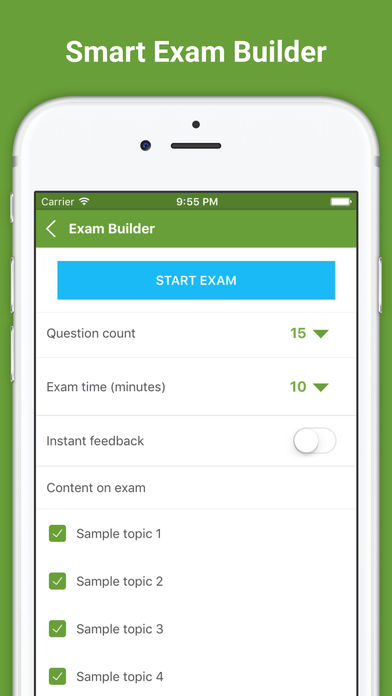
This app contains thousands of real exam questions with IMAGES for self learning & exam preparation on the topic of HVAC (heating, ventilating, and air conditioning). With our Advanced Smart Learning Technology, you can master the learning materials quickly by studying, practicing and playing at lunch, between classes or while waiting in line.
HVAC Exam app uses proven study and test-taking strategies so that you’ll feel confident and ready to go when you have to take the HVAC Exam.
Main Features:
+) Learning materials are prepared by EXPERTS in this field for the most current exam.
+) Automatically FILTER your most difficult terms and questions.
+) Learn more efficiently by PLAYING games with time constraint.
+) TRACK your progress on every small set youve studied.
HVAC (heating, ventilating, and air conditioning; also heating, ventilation, and air conditioning) is the technology of indoor and vehicular environmental comfort. Its goal is to provide thermal comfort and acceptable indoor air quality. HVAC system design is a subdiscipline of mechanical engineering, based on the principles of thermodynamics, fluid mechanics, and heat transfer. Refrigeration is sometimes added to the fields abbreviation as HVAC&R or HVACR, (heating,ventilating and air-conditioning & Refrigeration) or ventilating is dropped as in HACR (such as the designation of HACR-rated circuit breakers).
HVAC is important in the design of medium to large industrial and office buildings such as skyscrapers, onboard vessels, and in marine environments such as aquariums, where safe and healthy building conditions are regulated with respect to temperature and humidity, using fresh air from outdoors.
Ventilating or ventilation (the V in HVAC) is the process of "exchanging" or replacing air in any space to provide high indoor air quality which involves temperature control, oxygen replenishment, and removal of moisture, odors, smoke, heat, dust, airborne bacteria, and carbon dioxide. Ventilation removes unpleasant smells and excessive moisture, introduces outside air, keeps interior building air circulating, and prevents stagnation of the interior air.
Ventilation includes both the exchange of air to the outside as well as circulation of air within the building. It is one of the most important factors for maintaining acceptable indoor air quality in buildings. Methods for ventilating a building may be divided into mechanical/forced and natural types.
Disclaimer:
This app is not dedicated for any kind of professional certifications, its just a tool to assist students & professionals to expand their knowledge & in-depth their expertise. The publisher of this app is not affiliated with or endorsed by any testing organization. All organizational and test names are trademarks of their respective owners.



